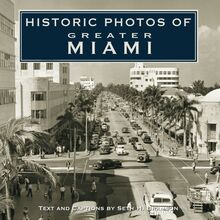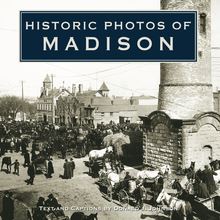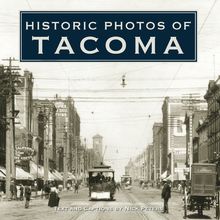Historic Photos of Harvard University , livre ebook
201
pages
English
Ebooks
2009
Vous pourrez modifier la taille du texte de cet ouvrage
Obtenez un accès à la bibliothèque pour le consulter en ligne En savoir plus
Découvre YouScribe en t'inscrivant gratuitement
Découvre YouScribe en t'inscrivant gratuitement
201
pages
English
Ebooks
2009
Vous pourrez modifier la taille du texte de cet ouvrage
Obtenez un accès à la bibliothèque pour le consulter en ligne En savoir plus
Publié par
Date de parution
01 novembre 2009
Nombre de lectures
2
EAN13
9781618583963
Langue
English
Poids de l'ouvrage
16 Mo
Publié par
Date de parution
01 novembre 2009
Nombre de lectures
2
EAN13
9781618583963
Langue
English
Poids de l'ouvrage
16 Mo
HISTORIC PHOTOS OF
HARVARD UNIVERSITY
T EXT AND C APTIONS BY D ANA B ONSTROM
A 1907 view of the Charles River and Soldiers Field, likely taken from the chimney of the coal plant where Eliot House now stands. Newell Boathouse (1900, at right) was the first permanent boathouse on the Charles, followed by Weld Boathouse (lower left) in 1906. The drawbridge shown here was replaced with the Anderson Memorial Bridge in 1915.
HISTORIC PHOTOS OF
HARVARD UNIVERSITY
Turner Publishing Company
200 4th Avenue North Suite 950
Nashville, Tennessee 37219
(615) 255-2665
www.turnerpublishing.com
Historic Photos of Harvard University
Copyright 2009 Turner Publishing Company
All rights reserved.
This book or any part thereof may not be reproduced or transmitted in any form or by any means, electronic or mechanical, including photocopying, recording, or by any information storage and retrieval system, without permission in writing from the publisher.
Library of Congress Control Number: 2009922627
ISBN: 978-1-59652-541-2
Printed in China
09 10 11 12 13 14 15 16-0 9 8 7 6 5 4 3 2 1
C ONTENTS
A CKNOWLEDGMENTS
P REFACE
H ARVARD B EFORE E LIOT (1636-1869)
T HE E LIOT Y EARS (1869-1909)
T HE L OWELL Y EARS (1909-1933)
T HE C ONANT Y EARS (1933-1953)
T HE P USEY Y EARS (1953-1971)
T HE B OK Y EARS (1971-1991)
N OTES ON THE P HOTOGRAPHS
B IBLIOGRAPHY
The Harvard Rowing Club on the Charles River, 1858. The first intercollegiate athletic event in the United States took place on August 3, 1852, when Harvard and Yale crew teams first competed. The crew pictured here included four undergraduates and two recruited faculty members: Alexander Agassiz (Class of 1855), who would succeed his father, Louis, as curator and director of the Museum of Comparative Zoology; and Charles W. Eliot (Class of 1853), Harvard s future president.
A CKNOWLEDGMENTS
This volume, Historic Photos of Harvard University , is the result of the cooperation and efforts of many individuals and organizations. It is with great thanks that we acknowledge the valuable contribution of the following for their generous support:
Harvard University Archives
Harvard University Archives, Harvard Law School
Harvard University Archives, Teddy Roosevelt Collection
The Library of Congress
Radcliffe College Archives, Schlesinger Library, Radcliffe Institute, Harvard University
P REFACE
I write this in the Stacks Reading Room of Widener Memorial Library on a warm, sunny day in May 2009. Outside Widener, in the broad expanse of Tercentenary Theatre, crews are hoisting a canopy over the steps of Memorial Church; hanging banners emblazoned with the College s arms between Widener s monumental columns; and arranging thousands of chairs in long rows that will eventually cover nearly every inch of Harvard Yard s well-worn lawns and eccentric web of walking paths.
Commencement Exercises and the annual Alumni Meeting are next week; next week, at this time, more than 30,000 students, family, friends, officers, alumni, and assorted interested parties will gather here to witness annual rites that have been observed at Harvard, nearly without interruption, since the first graduating class commenced in 1642.
On this beautiful spring day tourists-hundreds of them-traverse the Yard, snapping photos of one another-with cameras or phones-in front of John Harvard s statue; under the whispering arch of Sever Hall; and, of course, on the grand steps of Widener. Tour guides relate the meanings and history of this special place, stories I ve heard now a thousand times: how troops of George Washington s Continental Army, garrisoned at the College in 1775, stripped lead from the roof of Harvard Hall to fashion musket balls; why the tribute to John Harvard in front of University Hall is called the statue of three lies ; how Widener Memorial Library was built in memory of a young Harvard graduate tragically lost on the Titanic .
More than one guide will, inevitably, recount the myth of the Harvard Swim Test: how Eleanor Elkins Widener, as a condition of her gift of the library, insisted that the University require all undergraduates to pass a swimming test as a safeguard against the watery fate of her son, Harry. A good story-a stubbornly persistent one-but not true.
Harvard is a magnet for visitors because-beyond its reputation as the oldest, and arguably the finest, institution of higher learning in North America-it is one of the few preserved environments from the earliest days of this early outpost in the New World. One arrives at Harvard with the expectation of encountering genuine vestiges of pre-Colonial America-an authentic Williamsburg or Plimouth Plantation, in a sense. That is possible, of course-if one stands just so in the northwest corner of the Old Yard and limits one s gaze to Massachusetts Hall (built in 1718), Holden Chapel (1742), Hollis Hall (1762), and Harvard Hall (1764).
Beyond that small corner of a sprawling presence, the University reveals itself through centuries of expansion, improvements, shifting priorities, and-to a significant degree-its own evolving self-image. It is a remarkable, and remarkably successful, balancing act: Harvard presents itself at once as a guardian of history-its own and the Republic s-and as an exemplar of the modern research university, moving forcefully and confidently into the twenty-first century.
This balancing act extends to the adaptation of existing historical assets to modern needs and uses. The days of wholesale demolition to make way for new structures are, for the most part, long past. Consider this room in which I am presently writing: an elegant, reverential place, a skylit cathedral-like space more than four stories tall, populated by handsome reading tables and comfortable wing chairs, encircled by tall bookcases bearing bound folios of the Union Catalogue. I look across through arched mullioned windows into the domed, marble-clad Entrance Hall of the Harry Elkins Widener Memorial Room. It s possible, for a moment, to imagine Thomas Wolfe seated opposite me, scribbling furiously into notebooks from which Max Perkins would one day extract Look Homeward, Angel .
Except that this space, when Wolfe was an undergraduate-when I was an undergraduate, for that matter, in the dim, distant 1970s-was an air shaft, open to the sky and largely neglected. It became a reading room only in the aftermath of a comprehensive renovation of Widener, completed in 2004. The presence of the Union Catalogue is more aesthetic than practical: using the library s WiFi network I can search for and locate any book, manuscript, photograph-any document, regardless of medium-among the millions of documents in the Harvard library system.
So it goes. Emblazoned on those banners billowing out between Widener s columns is the single word Veritas . Truth. The guardians of Harvard s legacy might, one day, consider adding the old adage plus a change, plus c est la m me chose : the more things change, the more they stay the same.
And, perhaps, parenthetically-in acknowledgment of Harvard s unique ability to balance its past with its future-the words et Vice Versa .
- Dana Bonstrom
Wadsworth House, seen here in 1904, was constructed in 1726 as the residence of Harvard s eighth president, Benjamin Wadsworth (1725-1737). The second-oldest existing building at Harvard (after Massachusetts Hall), it served as the President s official residence for more than a century. In 1849 Wadsworth House was converted to student housing; in 1900 to accommodations for visiting clergy; and in 1950 to a variety of University administrative offices, as it remains today.
H ARVARD B EFORE E LIOT
(1636-1869)
One of the next things we longed for, and Looked after was to advance Learning and perpetuate it to Posterity.
- from the pamphlet New England s First Fruits (1643)
Harvard, throughout its first 200 years, remained much as envisioned upon its founding in 1636: a small private college established to provide a classical education to the sons of New England s gentry. By 1781-at the end of the Revolution, and almost 150 years after its founding-the College counted only 5 professors, 6 tutors, 200 students, and a handful of buildings.
The evolution of the College into a university began during the tenures of presidents John T. Kirkland (1810-1828) and Josiah Quincy (1829-1845). Kirkland oversaw the reform of the College s curriculum, away from the rote memorization of a strict classical model and toward the beginnings of a modern liberal education. During his presidency, the Law School and Divinity School were established, and the Medical School was reinvigorated. Kirkland also ordered the rehabilitation of the Yard from an unkempt sheeps-commons by planting grass and trees, and laying out a system of walking paths still in use today. President Quincy, despite his legendary unpopularity among Harvard s students, continued Kirkland s academic reforms. He also established the Astronomical Observatory, Harvard s first research division; and Gore Hall, the University s first free-standing library. Between Quincy s retirement in 1845 and the installment of Charles W. Eliot in 1909, progress was fitful at Harvard, with five presidents serving-some unwillingly, others disinterestedly, one dying in office after only a few months-for the next 23 years. Nevertheless, expansion initiatives in these years included the Lawrence Scientific School (1850); the Museum of Comparative Zoology (1858); the Peabody Museum of Archaeology and Ethnology (1866); and the founding of the Harvard Dental School (1867).
Harvard was sorely tested by the disruptions of the Civil War. In the decade leading up to the war, fully one-third of the student body was from states that would ultimately secede from the Union. The southern students, with the approach of war, abandoned their studies and returned home. By war s end in 1865, 1,311 Harvard men had served with the Union forces, 257 with














